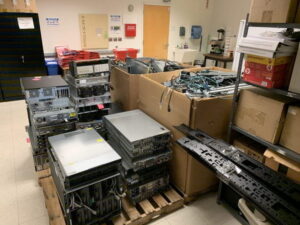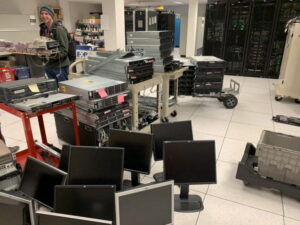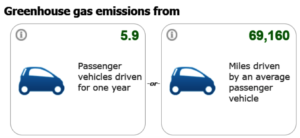Submitted by Rob Schimdt
People groan when they hear that IT needs to upgrade the hardware that their application is running on. Other than having their application run a little faster, what gains should they expect from hours of testing and possible downtime during the upgrade? Not too surprisingly- a lot!
Starting the project in December of 2017, a dedicated group of WashU IT personnel spent nearly 1,000 hours over 11 months migrating several applications to new hardware, removing the legacy hardware, and sending it to an electronic recycler. As a result of this project, we decommissioned 340TB of storage, removed 63 pieces of equipment, and reclaimed 5 racks in the data center.

The key project takeaways:
- Application lifecycle management: As soon as it’s put in place, ensure that we plan and work toward the replacement date for hardware and software components of an application.
- Communication: When starting the retirement process, Engage all stakeholders as early as possible.
So, now that it’s complete, did you even know it took place? I didn’t. Which, in the case of an infrastructure project is one of the best signs of success. But, this doesn’t happen by accident. It required ingenious engineering and strong teamwork to minimize customer disruption.

Regarding our end-user persona, What’s In It For Me (WIIFM), the first gain from this project was in human resources. Like old cars, maintaining legacy hardware often requires more human cycles than newer hardware. Therefore, upgrading to new (and mostly virtual) hardware frees up resources to advise customers about new private cloud and public cloud resources available to them.
With virtualization and more efficient hardware we also reduced our university’s carbon footprint. Comparing data center electric usage, pre- and post-application migration and removal, the Networking Engineering group determined that we were able to reduce the electricity consumed in the data center by 4.5KW, which is the equivalent of getting almost 6 cars off the road for 1 year1!

Note 1:
- For kW to kWh: https://www.rapidtables.com/convert/electric/kW_to_kWh.html
- For kW Hrs to Cars: https://www.epa.gov/energy/greenhouse-gas-equivalencies-calculator